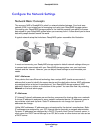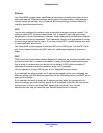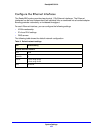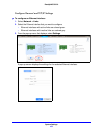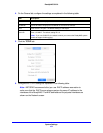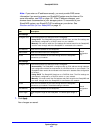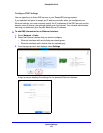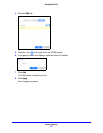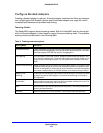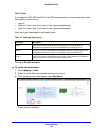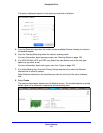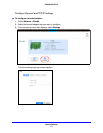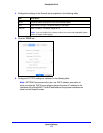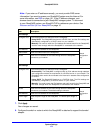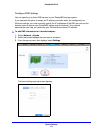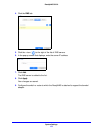
System Settings
168
ReadyNAS OS 6.0
Configure Bonded Adapters
Creating a bonded adapter is optional. A bonded adapter combines two Ethernet interfaces
into a single logical link. Network devices treat the bonded adapter as a single link, which
increases fault tolerance and provides load sharing.
Teaming Modes
The ReadyNAS supports several teaming modes. Both the ReadyNAS and the device with
which the bonded adapter is linked need to support the same teaming mode. The available
teaming modes are described in the following table.
Table 9. Teaming mode descriptions
Teaming Mode Description
IEEE 802.3ad LACP Creates aggregation groups that use the same
speed and duplex settings. Utilizes all
interfaces in the active aggregator according to the 802.3ad specification. You need a
switch that supports IEEE 802.3ad dynamic link aggregation.
Active Backup Only one interface in the bond is active. A d
ifferent interface becomes active if, and
only if, the active interface fails. The bond’s MAC address is externally visible on only
one port to avoid confusing the switch. You can decide which interface is active by
default.
Transmit Load Balancing Adapter bonding that does not require any special
switch support. The outgoing traffic
is distributed according to the current load (computed relative to the speed) on each
interface. Incoming traffic is received by the current interface. If the receiving interface
fails, another interface takes over the MAC address of the failed receiving interface.
Adaptive Load
Ba
lancing
Includes transmit load balancing plus receive load balancing for IPV4 traffic and does
not require any special switch support. The receive load balancing is achieved by
ARP negotiation.
Round-Robin Transmit packets in sequential order from the first avai
lable interface to the next. This
mode provides load balancing and fault tolerance.
XOR Transmit based on the default simple transmi
t hash policy. This mode provides load
balancing and fault tolerance.
Broadcast Transmit everything on all slave interfaces.
This mode provides fault tolerance.



